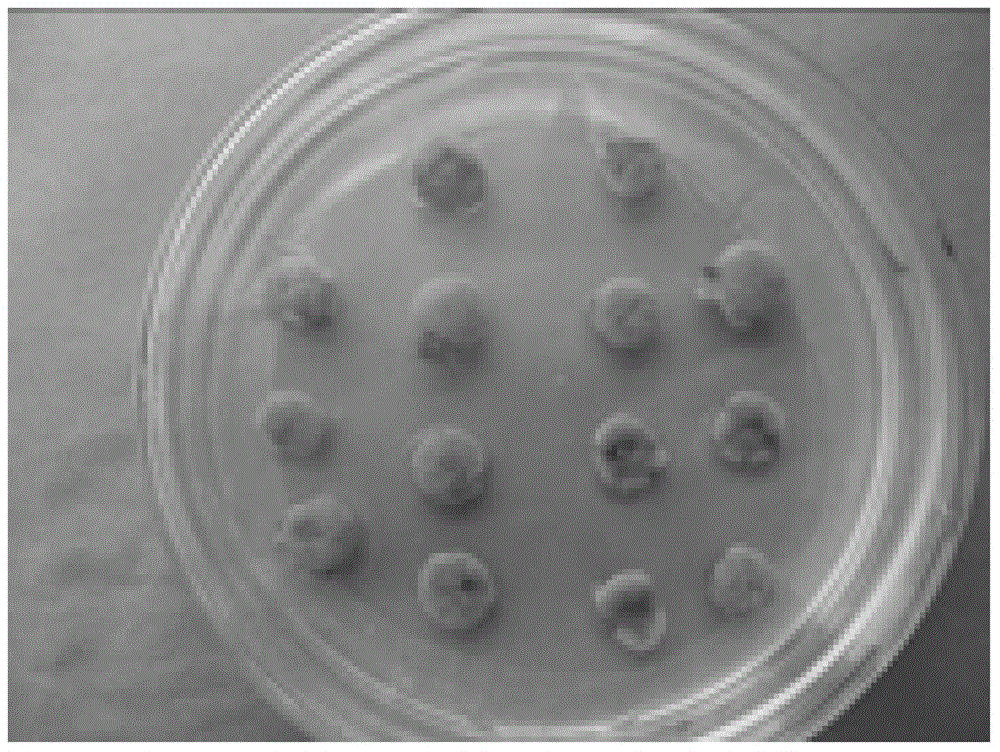Peony callus induction method
A technology of callus induction and peony, applied in horticultural methods, botanical equipment and methods, horticulture, etc., can solve problems such as unformed systems, and achieve the effect of low cost, simple operation, and wide application
- Summary
- Abstract
- Description
- Claims
- Application Information
AI Technical Summary
Problems solved by technology
Method used
Image
Examples
Embodiment 1
[0029] 1. Materials and methods
[0030] The test materials were taken from the Xiaotangshan National Flower Engineering Center in Changping District, Beijing at the beginning of April 2011. figure 1 . The tender stems are used as explants to collect from the peony cultivar 'Coral Sunset' which is more than 3 years old.
[0031] Rinse the retrieved tender stems under running water, then soak them with detergent and 0.26% NaClO by mass for 20-30 minutes, then rinse them under running water for 30-40 minutes, absorb the water with absorbent paper, and place Go to the ultra-clean workbench for disinfection. Disinfect with 75% alcohol by volume for 30 seconds, rinse twice with sterile water, and then use 0.1% HgCl by mass 2 Disinfect for 10 minutes, rinse with sterile water for 4 times, cut the stem section into 0.1-0.3cm thin slices, and inoculate on the surface of the induction medium.
[0032] Inoculate the stem segments of 'Coral Sunset' on the starter medium based on thre...
PUM
 Login to View More
Login to View More Abstract
Description
Claims
Application Information
 Login to View More
Login to View More - R&D
- Intellectual Property
- Life Sciences
- Materials
- Tech Scout
- Unparalleled Data Quality
- Higher Quality Content
- 60% Fewer Hallucinations
Browse by: Latest US Patents, China's latest patents, Technical Efficacy Thesaurus, Application Domain, Technology Topic, Popular Technical Reports.
© 2025 PatSnap. All rights reserved.Legal|Privacy policy|Modern Slavery Act Transparency Statement|Sitemap|About US| Contact US: help@patsnap.com



